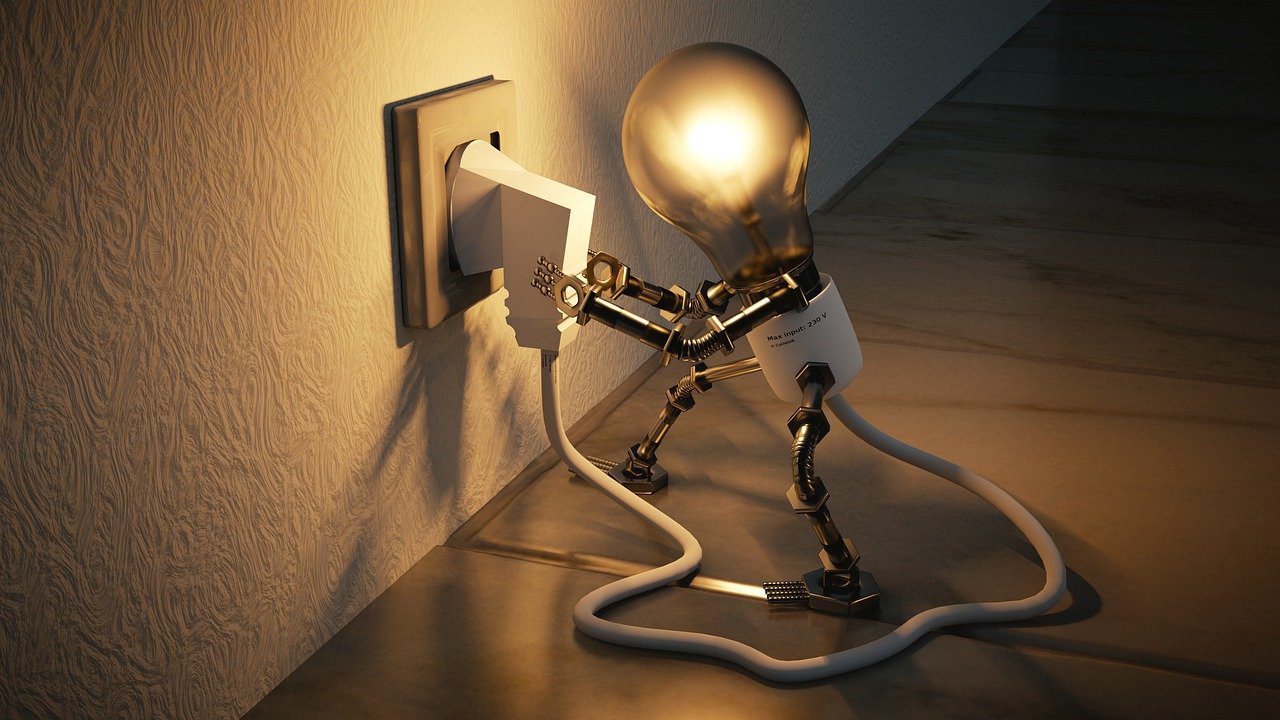There are many types of lighting technology available. Many of the traditional incandescent bulbs (light bulbs) have been retired. Now, more efficient light bulbs such as CFL or LED are available. They also tend to be cheaper upfront.
It is easy to choose the right type of light bulb technology for your next replacement lamp. Choose an LED. High quality LED lighting products will produce the same light and effect as the original, but they are much more efficient and economical to run.
This page is designed to provide information about the most common lighting technologies. This page explains the essential functions of light bulbs, their energy efficiency and costs to replace.
This page contains information about
- Incandescent lamps
- Halogen lamps
- CFL
- LED
- How light bulbs work.
Table Of Contents
36%
Since 2009, how much less electricity has been used to light an average home?
$5
What it usually costs to run an LED quality in a high-traffic area of a home for a year
$102
How much could a household save each year by replacing 18 halogens (with LEDs)?
Incandescent light bulbs
For more than 100 years, the standard or traditional incandescent bulb was the most popular lightbulb type.
Traditional light bulbs consume a lot of electricity and are not as long-lasting as other types of lighting such as CFL or LED. This is why most of the phased out lamps in Australia have been, except for halogen incandescent bulbs.
The most efficient incandescent lamps (halogens) require more energy to produce the same amount of light than an LED. They must be replaced a minimum of five times per LED’s lifetime. Although incandescent lamps are more affordable than energy-efficient lighting products, they will likely cost you more. You could pay $229 more annually to light your home,
The incandescent phase is over.
In 2009, a phase-out was initiated to replace traditional (standard) incandescent bulbs.
Most incandescent bulbs could not be imported to Australia, and sales restrictions were imposed. Most of these bulbs were not made available to the public.
Only a few heat lamps, candles, fancy round, and decorative incandescent bulbs can be found in Australia. You should replace any incandescent light bulb in your home if you have them. They are a waste of 90% of energy, mostly heat. You will end up paying more for your energy bills if you don’t.
Halogen Bulbs
The light produced by halogen bulbs is the same as that of standard incandescent lamps. Because halogens are so efficient at producing light, they use less electricity.
A halogen bulb can produce the same amount of light (lumens) as a standard incandescent lamp but with less energy (Watts). It is more efficient than a CFL/LED but not nearly as efficient.
A traditional incandescent lamp that uses 60 Watts produces the same amount of light (lumens) as a halogen lamp that uses only 42 Watts. Although the halogen is more efficient than a CFL, LED or LED, it is not as energy-efficient.
The cheapest light bulbs to purchase are halogen, but they have the longest lifetime costs. A halogen can be purchased for as little as $3. This is in contrast to a CFL that costs $6 or an LED that costs $10. They are a tempting choice at first, but it can end up being a costly mistake if you don’t consider how much they will cost and how often you will need to replace them.
Although halogen bulbs last longer and are more efficient than traditional incandescent bulbs, they are still inefficient and expensive to operate. You should compare the lifetime costs of halogen bulbs with those that are more efficient before you make a purchase.
Fluorescent lights
Fluorescent lamps – including CFLs – are more efficient than incandescent or halogen light bulbs, so they are less expensive to operate.
You could save $5.62 annually if you replaced just one halogen lamp with a CFL. You could save $208 each year if you replace a whole house worth of halogen lamps with CFLs (37 on average).
CFLs are very popular in homes because they can be used as direct replacements for traditional and halogen incandescent lamps. They also have higher efficiency LED lights. Fluorescent tubes are available in a different fitting (the Ballast) and are commonly used in garages, offices, and other places.
Although fluorescent lights may not be as efficient as LED lighting, they are still very efficient. Fluorescent lights can produce a lot of light but not much heat because of the way they work. Fluororos are an efficient choice because they don’t waste electricity. They are nearly as inexpensive to operate as LEDs but last half as long.
LED Bulbs
The Light Emitting Diode is generally the most efficient lighting technology that you can purchase for your home.
An LED of high quality produces more light and uses less electricity. Their price is continuing to drop, which is a good thing.
Buy quality LED bulbs to lower your electricity bills.
An LED replacement could be as simple as replacing a household with halogen bulbs. This would save you $253 per year. A quality LED lasts five times longer than a standard halogen bulb, so you can save money on replacements.
Smart LED light bulbs – Stay energy-efficient with smart LED bulbs.
LED is the most efficient choice, but smart lighting is sometimes a better option.
Smartphone apps are often used to control smart LED bulbs. Remotely, they can be turned on or off as well as adjusted to adjust their brightness (lumens) and colour temperature. You can change the colour of your party bulbs to make them red, green, or blue. Smart lighting is ideal if your sofa allows you to adjust the brightness or dimming of the lights, or you need to switch the lights off or on remotely from your home.
Some smart lighting products can draw surprising amounts of energy (Watts) when they are on standby. This is not always a better choice. Some smart lighting products, despite being powered by LED technology, are just as efficient as the traditional incandescent bulbs that were phased out years ago.
It is important to fully understand all facts about smart lighting products before purchasing. Also, make sure you take into account standby power consumption when shopping for them. It could cost you more in electricity bills than you expected if you don’t.
How do light bulbs work?
What is the working principle of the incandescent light bulb?
Incandescent light bulbs are made by heating a wire (the tungsten filament) to high temperatures and running an electric current through it until it glows brightly.
The wire (filament) produces more light (lumens) if it has more energy (Watts). Also, more heat is generated when there is less energy. Because a lightbulb’s purpose is to produce light, not heat, any energy used to generate heat is wasted.
Also, a bulb producing more heat for the same amount of light output is less efficient.
The filament becomes thinner as the tungsten molecules in it evaporate over time. If it is too thin, it will blow, and you’ll need to go to the shops to purchase another replacement bulb.
How do halogen light bulbs function?
The light produced by halogen bulbs is the same as that of standard incandescent lamps.
The bulb still heats up a tungsten filament, just like an incandescent lamp. However, it also contains halogen gas. The halogen reacts to the tungsten so that the bulb heats up faster and gets brighter. This reaction slows down the wear of the filament, making it last longer.
A halogen lamp consumes less electricity and lasts twice as long as an equivalent standard incandescent bulb. But halogens are less durable and more expensive to operate than energy-efficient lights like CFL or LED.
How fluorescent lights work
Fluorescent lamps, whether CFLs or fluorescent tubes, work by creating an electric charge within a glass tube filled with vapour.
Mercury vapour is contained in the tube. This mercury vapour reacts to the charge and produces invisible ultraviolet (UV). The UV hits the tube’s phosphor lining, which excites the phosphor and produces visible light.
This excitement creates a lot of light but low levels of heat. It also means that very little energy is lost. Fluoros, regardless of the type, are an efficient way to lighten your home.
What is the working principle of LED light bulbs?
The Light Emitting Diode or LED bulbs perform differently from fluorescent and incandescent lighting.
LED lights are powered by electricity. The electrons are excited by the charge, which moves them rapidly through the solid matter, resulting in light. This produces very little heat, so electricity is not wasted.
Quality LEDs are extremely energy-efficient. LEDs can produce light at a fraction of the cost of traditional bulbs, and they are very economical, even in high-use areas.
Because LED bulbs don’t require a filament to work and emit very little heat, it takes them a long time before they wear out. A quality LED will last five to fifteen times as long as halogen lighting. This means that you will have to spend money on replacement bulbs and climb on chairs to change the bulbs.
Before you make a purchase, consider the life expectancy and longevity of LED bulbs before you make a decision and contact a licensed electrician in Brisbane Northside for all lighting installations.

